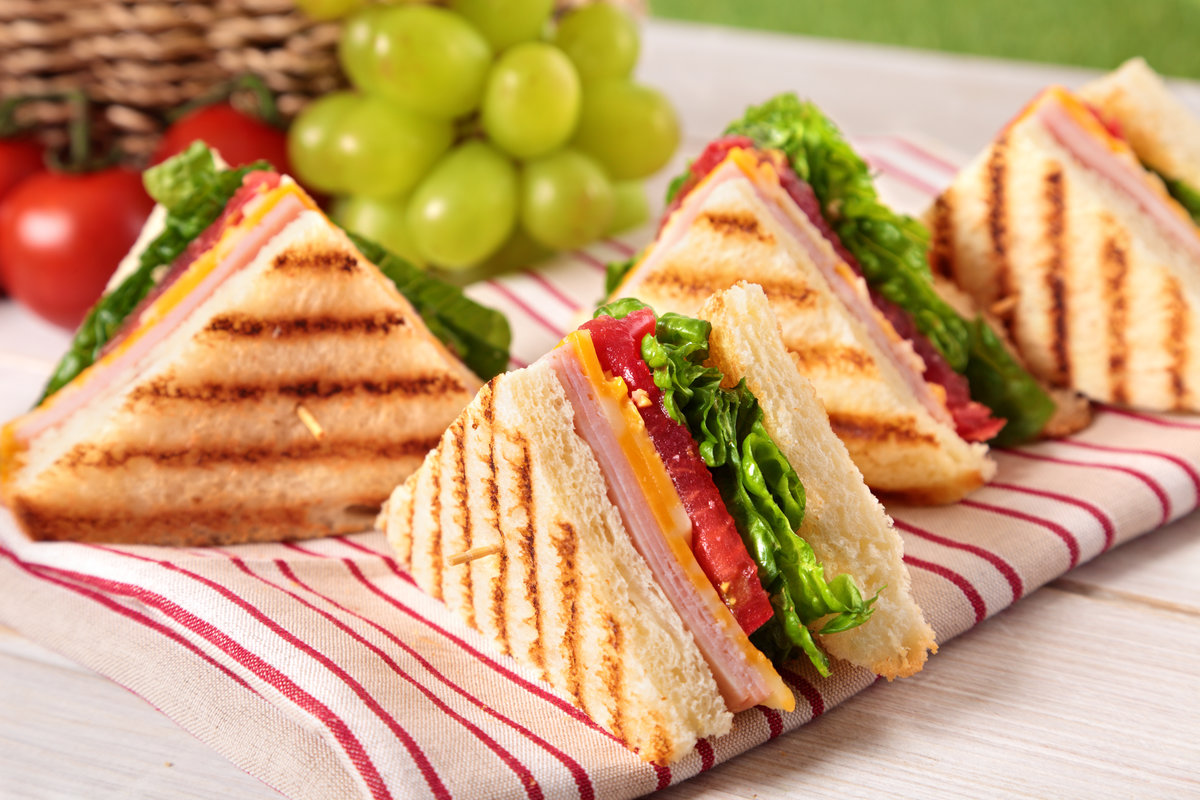A legacy of innovation, quality, and culinary experience.
Read our NewsletterLearn how to make delicious sandwiches with this comprehensive guide. Discover tips, tricks, and practical insights to craft satisfying sandwiches for every occasion.
A sandwich might seem like a simple meal, but behind its apparent simplicity lies a world of culinary creativity. The sandwich has transcended cultures and generations, evolving from a humble combination of bread and filling to a versatile, gourmet experience. Whether it’s a quick lunch, a hearty dinner, or a delightful snack, a well-made sandwich can satisfy a wide range of cravings and needs. Understanding how to make delicious sandwiches is not just about following a recipe; it’s about mastering balance, texture, and flavor to craft something truly enjoyable. This guide is designed to help you unlock the secrets of sandwich-making, offering practical tips, tricks, and insights that will elevate your sandwich game and inspire your inner chef.

The type of bread you select can make or break a sandwich. The bread not only provides structure but also influences the overall texture and taste. Consider choosing bread that complements your fillings. For hearty ingredients like roasted meats and grilled vegetables, opt for rustic bread such as ciabatta or sourdough, which can withstand moisture and add a satisfying crunch. Lighter options like whole wheat or multigrain are perfect for deli-style sandwiches with lean proteins and fresh vegetables. Toasting or grilling the bread can enhance both flavor and structural integrity, especially for sandwiches with juicy fillings like Mushroom Slices or Whole Peeled Tomatoes. Experimenting with different bread types and textures can transform a good sandwich into a memorable one.
A delicious sandwich relies heavily on its fillings. The key is to create a balance of flavors, textures, and even temperatures. For proteins, consider options like thinly sliced turkey, roast beef, or grilled chicken, each bringing a unique taste profile. Vegetarian fillings such as roasted Mushroom Slices, marinated tofu, or Golden Corn offer equally satisfying alternatives. Adding a layer of crunch, like crispy lettuce, cucumber slices, or Jalapeno Slices, contrasts beautifully with soft ingredients. Incorporating a variety of flavors, salty, sweet, sour, and savory, keeps the palate engaged. Spreads and condiments, from pesto to Mustard, BBQ, Classic Mayonnaise, or even fruit chutneys, can elevate your sandwich by adding moisture and a punch of flavor.

Layering ingredients thoughtfully ensures that each bite delivers the intended taste and texture. Start with a light spread of your chosen condiment, like Mustard or Classic Mayonnaise, on both slices of bread to prevent sogginess and enhance flavor. Next, layer your protein evenly to provide a solid base. Add vegetables and toppings strategically, placing items with higher moisture content, like Whole Peeled Tomatoes or Golden Corn, closer to the center to prevent the bread from becoming soggy. Consider layering cheese between the meat and vegetables for a creamy texture that helps bind everything together. Press the sandwich gently before cutting to allow the ingredients to meld without compressing the bread excessively.
Texture is a crucial factor in crafting a memorable sandwich. Combining contrasting textures, such as the crispness of fresh greens with the creaminess of avocado or cheese, adds depth to each bite. Toasted nuts, crispy bacon, or fried onions can introduce an unexpected crunch, while spreads like hummus or vegetable shortening add smoothness. The key is moderation; too many crunchy elements can overpower the palate, while overly creamy fillings might feel heavy. Striking a balance creates a sandwich that’s not only flavorful but also enjoyable to eat.
Using seasonal and fresh ingredients elevates the quality of a sandwich significantly. Fresh produce, such as vine-ripened Whole Peeled Tomatoes, crisp cucumbers, or tender greens, offers vibrant flavors and essential nutrients. Seasonal fruits, like apples or pears, can add a touch of sweetness and a refreshing crunch. Herbs like basil, cilantro, or parsley contribute a burst of aroma and color. When sourcing proteins, opting for freshly sliced deli meats or grilled components made at home ensures better flavor and texture. Paying attention to ingredient quality ultimately leads to a more satisfying sandwich experience.
Temperature plays a subtle but essential role in sandwich making. Some sandwiches shine when served hot, such as a classic grilled cheese or a panini with melted cheese and warm fillings. Others, like a club sandwich or a veggie wrap with Jalapeno Slices and Golden Corn, are best enjoyed cold, preserving the crispness of fresh vegetables. Room-temperature sandwiches, such as an egg salad or tuna salad option with vegetable shortening, offer convenience and consistent flavor. If reheating a sandwich, consider using a panini press or oven to preserve the texture without making it soggy.
Once you’ve mastered the fundamentals, it’s time to explore creative variations. Experiment with international influences, such as a banh mi with pickled vegetables and spicy BBQ sauce, or a Mediterranean wrap with falafel and tahini. Incorporate unique spreads like beet hummus or Classic Mayonnaise for added flair. Consider adding unexpected ingredients, like grilled pineapple for a hint of sweetness, Golden Corn for extra crunch, or a drizzle of balsamic glaze for complexity. Creativity allows you to tailor sandwiches to personal preferences and occasions, making them suitable for casual lunches, elegant dinners, or even party platters.

Different occasions call for different sandwich styles and preparations. For a picnic, prepare sturdy sandwiches with minimal moisture and wrap them tightly to maintain freshness. For work lunches, opt for simple combinations that are easy to transport and won’t require reheating. Party platters benefit from mini sandwich options with varied fillings to cater to different tastes. When serving guests, consider a sandwich bar where individuals can customize their creations with condiments like Mustard, Classic Mayonnaise, BBQ, or ketchup. These strategies ensure that your sandwiches remain practical, fresh, and enjoyable for any situation.
Sometimes, you may need to prepare sandwiches in advance. To maintain quality, keep spreads separate until serving, and use moisture-resistant layers like cheese or lettuce to shield the bread from wet fillings. Wrap each sandwich tightly in parchment paper or beeswax wrap to retain freshness without trapping moisture. Store them in the refrigerator if needed, but bring them to room temperature before serving to restore optimal texture. Avoid freezing fully assembled sandwiches unless specifically designed for freezer storage, as freezing can alter the texture of bread and fillings, particularly items like Whole Peeled Tomatoes or Golden Corn, which may release moisture upon thawing.
The art of making delicious sandwiches is about more than just assembling ingredients. It’s about understanding the interplay of flavors, textures, and techniques to create something satisfying and memorable. From choosing the right bread and layering fillings to balancing textures and exploring creative variations, each step contributes to a better sandwich-making experience. Whether you’re crafting a quick meal for yourself or preparing a platter for a gathering, these insights and tips will help you approach sandwich-making with confidence and creativity. By focusing on quality ingredients, thoughtful combinations, and practical techniques, you can turn a simple sandwich into a culinary masterpiece that delights and nourishes.